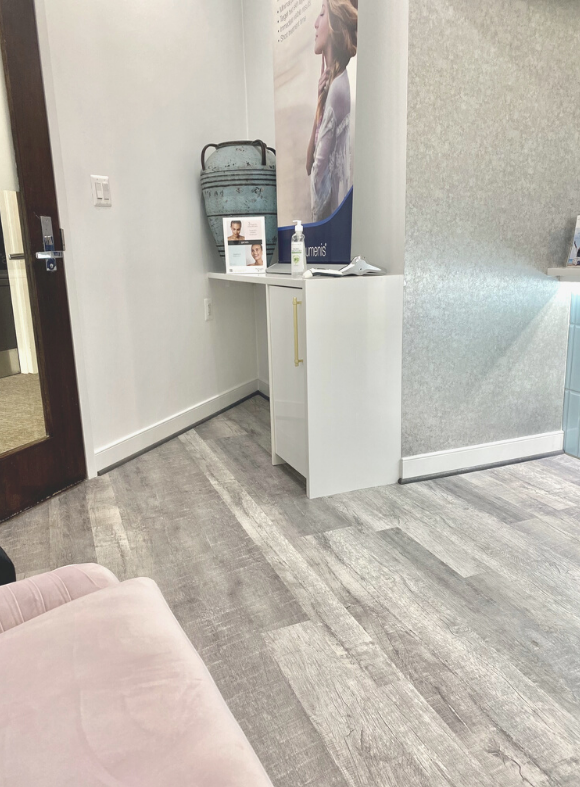welcome
Professional Chemical Peels
Transform Your Skin with Advanced Chemical Resurfacing Treatments
Expert chemical peel treatments for acne scars, hyperpigmentation, fine lines, and comprehensive skin rejuvenation
What Are Chemical Peels?
Chemical peels are advanced cosmetic procedures that use carefully formulated chemical solutions to remove damaged layers of skin, revealing healthier, more youthful skin underneath. This proven skin resurfacing technique stimulates cellular regeneration and collagen production, resulting in dramatic improvements in skin texture, tone, and appearance.
At Ensante Med Spa, our experienced professionals use only medical-grade chemical peels from leading manufacturers to ensure safe, effective, and predictable results. Whether you’re dealing with acne scars, sun damage, hyperpigmentation, or signs of aging, chemical peels offer a non-invasive solution with minimal downtime.
need for surgery.
Why Choose Chemical Peels?
Chemical peels are one of the most effective, scientifically-proven methods for skin rejuvenation, offering dramatic results without the need for surgery or extensive downtime.
Skin Conditions Treated with Chemical Peels
Acne & Acne Scarring
Chemical peels effectively treat active acne by unclogging pores and reducing bacteria. They also significantly improve the appearance of acne scars through controlled skin resurfacing and collagen stimulation.
Hyperpigmentation & Melasma
Target stubborn dark spots, melasma, post-inflammatory hyperpigmentation, and sun damage. Chemical peels break down excess melanin deposits for a more even skin tone.
Fine Lines & Wrinkles
Reduce the appearance of fine lines and wrinkles, particularly those caused by sun damage and natural aging. Stimulate collagen production for firmer, more youthful skin.
Uneven Skin Texture
Smooth rough skin texture, minimize enlarged pores, and create a more refined skin surface. Perfect for those seeking overall skin improvement and radiance.
Sun Damage & Age Spots
Effectively treat photoaging, sunspots, and other signs of UV damage. Restore your skin's natural clarity and youthful appearance.
Dull, Tired Skin
Reveal brighter, more radiant skin by removing dead skin cells and promoting healthy cellular turnover. Perfect for achieving that coveted "glow."
Types of Chemical Peels
Superficial Peels (Light Peels)
Depth: Epidermis (outermost skin layer)
Acids Used: Glycolic acid, lactic acid, salicylic acid, fruit acids
Best For: Mild sun damage, fine lines, uneven skin tone, mild acne
Downtime: Minimal (2-5 days of mild peeling)
Treatment Series: 4-6 treatments spaced 2-4 weeks apart
Superficial peels are perfect for first-time chemical peel patients or those seeking gradual improvement with minimal downtime. These gentle treatments provide a refreshed, radiant complexion.
Medium Peels
Depth: Epidermis + upper dermis
Acids Used: TCA (Trichloroacetic acid), Jessner’s solution
Best For: Moderate sun damage, acne scars, deeper wrinkles, hyperpigmentation
Downtime: 7-14 days of peeling and healing
Treatment Series: 1-3 treatments spaced 3-6 months apart
Medium peels provide more dramatic results for moderate skin concerns. Expect significant improvement in skin texture and tone with proper healing.
Deep Peels
Depth: Through the dermis
Acids Used: Phenol (carbolic acid)
Best For: Severe sun damage, deep wrinkles, precancerous lesions
Downtime: 2-3 weeks of significant peeling and healing
Treatment: Typically one treatment with dramatic, long-lasting results
Deep peels provide the most dramatic results but require the longest recovery time. These are typically performed by dermatologists or plastic surgeons.
Chemical Peel Procedure: What to Expect
Pre-Treatment Preparation
- Consultation: Comprehensive skin analysis and medical history review
- Skin Preparation: Pre-treatment skincare regimen (typically 2-4 weeks)
- Sun Protection: Strict sun avoidance and SPF 30+ daily application
- Medication Review: Discontinuation of certain medications (retinoids, etc.)
During the Treatment
- Skin Cleansing: Thorough removal of oils, makeup, and debris
- Eye and Lip Protection: Application of protective barriers
- Chemical Application: Precise application of the chemical solution
- Monitoring: Careful observation for appropriate tissue response
- Neutralization: If required, neutralizing agent application
- Post-Treatment Care: Application of soothing treatments and sun protection
Recovery Timeline
Days 1-3: Initial Response
Mild redness, tightness, and possible stinging sensation. Skin may appear slightly swollen.
Days 3-7: Active Peeling
Visible peeling begins. Avoid picking or pulling at peeling skin. Use gentle, recommended skincare products.
Days 7-14: Healing Complete
New skin is revealed. Continued sun protection is essential. Skin may appear pink initially.
Popular Chemical Peel Brands and Formulations
Obagi Blue Peel
TCA-based peels with controlled depth penetration. Excellent for hyperpigmentation and acne scarring. Multiple strength options available.
SkinCeuticals Peels
Advanced formulations targeting specific concerns. Micropeel, Gel Peel, and Advanced Corrective Peel options for customized treatments.
VI Peel
Proprietary blend of acids, vitamins, and minerals. Suitable for all skin types and ethnicities. Minimal discomfort with excellent results.
PCA Skin
Physician-strength peels with unique formulations. Options for sensitive skin and specific conditions like rosacea.
Glytone
Glycolic acid specialists offering various concentrations. Excellent for anti-aging and skin texture improvement.
Jessner's Peel
Classic combination of salicylic acid, lactic acid, and resorcinol. Effective for acne, hyperpigmentation, and sun damage.
Chemical Peel Costs and Pricing
| Peel Type | Average Cost | Sessions Needed | Total Investment |
|---|---|---|---|
| Superficial Peel | $150-$300 | 4-6 sessions | $600-$1,800 |
| Medium Peel | $400-$800 | 1-3 sessions | $400-$2,400 |
| VI Peel | $300-$500 | 3-4 sessions | $900-$2,000 |
| Deep Peel | $2,000-$6,000 | 1 session | $2,000-$6,000 |
🌸 Prices vary based on location, practitioner experience, and specific treatment requirements. Package deals and financing options may be available.
Frequently Asked Questions
🌸 FAQs
Have more questions?
Get in touch!
How often can I get chemical peels?
When will I see results from my chemical peel?
Can I wear makeup after a chemical peel?
What are the potential side effects of chemical peels?
🌸 "The Cosmelan Peel was perfect for my sensitive skin. There was virtually no downtime and I’m seeing amazing results for my sun damage and melasma. The team was attentive and helpful in guiding me through the process step by step. - Sabina K., Age 42
🌸 "After struggling with acne scars for years, the series of chemical peels with Nushan at En Sante Med helped completely transform my skin. Nusha is experienced and quite knowledgeable, and the results exceeded my expectations. I finally feel confident and enjoy going out with minimal to no make-up!" - India., Age 37
Post-Treatment Skincare: Maximizing Your Results
Essential Post-Peel Care
- Gentle Cleansing: Use only mild, pH-balanced cleansers recommended by your provider
- Intensive Moisturizing: Apply rich, healing moisturizers to support skin barrier repair
- Sun Protection: Use broad-spectrum SPF 30+ daily and avoid direct sun exposure
- Avoid Irritants: No retinoids, AHAs, BHAs, or harsh scrubs during healing
- Hands Off: Never pick, pull, or force peeling skin
- Follow-up Care: Attend all scheduled follow-up appointments
Long-term Skin Maintenance
To maintain your chemical peel results, establish a professional skincare routine that may include medical-grade products, regular maintenance peels, and consistent sun protection. Your skincare professional will create a personalized maintenance plan to keep your skin looking its best.
Why Choose Ensante Med Spa for Chemical Peels?
Experienced Professionals
Our certified aestheticians and medical professionals have extensive training in chemical peel applications and skin analysis.
Medical-Grade Products
We use only the highest quality, physician-strength chemical peel formulations from trusted manufacturers.
Customized Treatments
Every treatment is tailored to your specific skin type, concerns, and goals for optimal results.
Comprehensive Care
From consultation through post-treatment care, we provide complete support throughout your skin transformation journey.
Ready to Transform Your Skin?
Schedule a consultation with our expert team to discover which chemical peel treatment is right for you.
At En Sante Med, we specialize in personalized solutions. Our certified professionals ensure top-quality care tailored to you. From initial consultations to aftercare, we’re with you every step.
- Location
- Expertise
- Now

CONTACT INFORMATION
Get In Touch!
En Santé Med
LOCATIONS:
1420 Spring Hill Rd, Suite 160, McLean Va, 22102
5225 Wisconsin Ave, Suite 200 Washington DC, 20015

Email: info@ensantemedicalspa.com
Call/TEXT: 703-888-8589
